Understanding the New Normal World of a Story’s Resolution
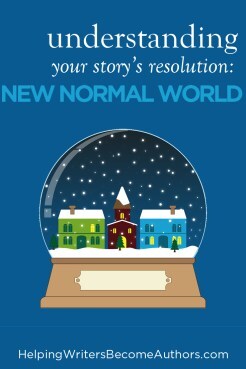 A story’s Resolution is a tiny section of the overall story. From the perspective of structural timing, the Resolution represents 2% or even less of the story’s total running time. Some stories give it the generous portion of as much as a few chapters. But in other stories, the Resolution may be implied more than shown, given as little as a quick summarizing sentence or two. So why are we spending a whole post investigating the symbolic “world” of the Resolution? Simply, because the New Normal World of a story’s Resolution is, in many ways, what brings the entire picture into view.
A story’s Resolution is a tiny section of the overall story. From the perspective of structural timing, the Resolution represents 2% or even less of the story’s total running time. Some stories give it the generous portion of as much as a few chapters. But in other stories, the Resolution may be implied more than shown, given as little as a quick summarizing sentence or two. So why are we spending a whole post investigating the symbolic “world” of the Resolution? Simply, because the New Normal World of a story’s Resolution is, in many ways, what brings the entire picture into view.
Over the last few weeks, this series has been exploring the symbolic lens through which each of the three acts of a story can be viewed. So far we’ve talked about:
1. The Normal World of the First Act
2. The Adventure World of the Second Act
3. The Underworld of the Third Act
4. The New Normal World of the Resolution
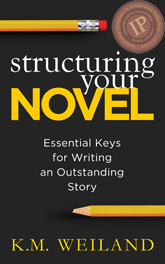
Structuring Your Novel (Amazon affiliate link)
I have long used the terms “Normal World” and “Adventure World” to describe the respective essences of the First and Second Acts. Although the specific terms are not found in discussions of the Hero’s Journey, both are based on the psychological principles found in the archetypal transformation of the Hero’s Journey, as originally codified by Joseph Campbell in The Hero With a Thousand Faces. He talks about the Ordinary World the Hero departs, the adventurous “Quest” that comprises the main conflict of the tale, and the “Descent” into the “Innermost Cave” that correlates with the structural Low Moment of the Third Plot Point and the Third Act.

The Hero With a Thousand Faces Joseph Campbell (affiliate link)
He also talks about “the Return.” One of the key principles of the Hero’s Journey is that a Hero who has been successful in his Quest will return to his home so the people he left behind may also benefit from what he has gained from his travels. The other important aspect of this beat is the opportunity it offers to contrast who the Hero was at the beginning of the story with who he is now. By returning him to the same, or a similar, situation as the Normal World at the beginning of the story, everything is brought full circle: plot, character, theme, setting, imagery, etc.
The Resolution itself exists to tie off loose ends, allow the pacing of the story to fade to a final resounding note, and create the final emotional effect upon the audience. Whether meant to confirm or add irony to whatever has come before, it is the final bit of trimming on the finished story. Even if the presentation of the New Normal World in a story’s Resolution is extremely brief, it is still an important beat for creating cohesion and resonance in the overall effect. (It’s also a great opportunity to practice chiastic structure!)
The Normal World of the ResolutionThe Resolution represents the final scene or scenes of the story, perhaps from 98% to 100%. It occurs at the very end of the Third Act (which began back at the 75% mark) and takes place just after the Climactic Moment. As the word suggests, the Resolution resolves the story. Even though the main conflict has ended with the previous beat of the Climactic Moment, most stories require at least a quick “sequel scene” in which to show characters’ reactions to what just happened and to provide context for the protagonist’s victory or failure in the preceding Climax.
What Does the New Normal World Symbolize?

Creating Character Arcs (Amazon affiliate link)
Although in some standalone stories, a character’s arc will be definitive, that’s not really how it works in real life. In real life, we follow one personal transformation with another and another. Change in the external world, no matter how dramatic, is never conclusive. If there’s one thing that is always the same it is that things always go on changing. Therefore, the New Normal World of a story’s Resolution exists both to cap off the change experienced by your characters in this story and also to reset the stage, if only by implication, for the next change.
The Normal World of the First Act symbolized and dramatized the Lie the Character Believed at the beginning of the story. It represented the status quo that was about to end. Now that the character has interacted with both Lie and Truth throughout this story, finally aligning with one or the other, the New Normal World now represents the new status quo. In a story in which the protagonist changed not just herself for the better but also the world around her, this new status quo will usually contrast positively with the previous one.
In some stories, the protagonist will return to basically the same world from the First Act, but with new eyes to be able to appreciate or interact with it in a more positive way, such as previously unhappy Dorothy Gale being able to say “there’s no place like home” when she awakens from her dream in The Wizard of Oz.
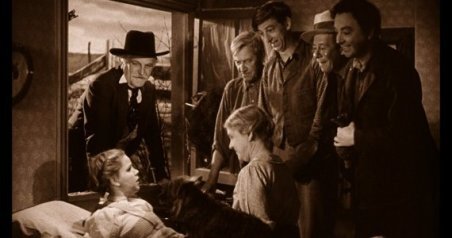
In other stories, the protagonist will follow Joseph Campbell’s model more closely by returning to her original Lie-ridden world and offering it the healing “Elixir” she picked up during her travels, as in The Return of the King, when the hobbits return to find the Shire gravely oppressed and deteriorated and use their newfound skills to restore it.
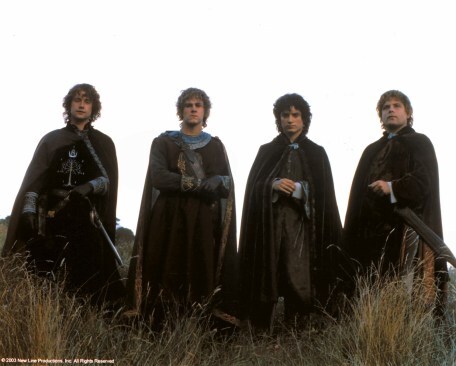
Sometimes, the Normal World will have transformed itself in the protagonist’s absence, as a direct result of his actions, as in Back to the Future, when Marty returns to find his parents living much better lives thanks to his time-travelling actions in the past.
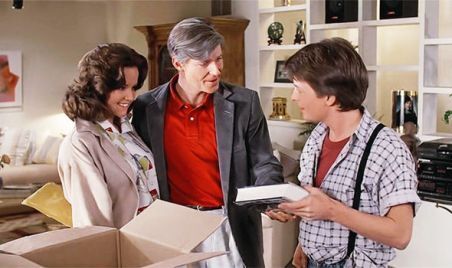
But other times, the purpose of the Normal World is to contrast the protagonist’s change against its own rigidly unchanging nature. This can create a tragic note, such as in Cast Away, when Chuck Noland returns from his island sojourn to realize he no longer fits into his own life.
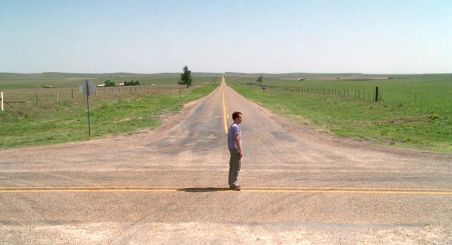
But it can also be simply a natural confirmation for the protagonist that it is time to move on with her life, as in many coming-of-age stories, such as Bend It Like Beckham, in which Jess leaves for college on a soccer scholarship at the end.

As with all of its related “worlds,” the New Normal World of the Resolution may or may not be a unique physical setting within your story. What it ultimately represents is the protagonist’s relationship with his surroundings. The change of settings from “world” to “world” is less important than is the protagonist’s changing relationship with his world.
In stories in which the protagonist physically leaves the Normal World in the First Act, he may very well return to that same setting in the Resolution. But it will have transformed into a New Normal World, according to one of the previously mentioned possibilities. For example, Mulan returns to her village at the end of the story, but the status quo has changed, both because she has protected the kingdom and because her own transformation has changed her destiny and removed shame from her family.

In other stories, the protagonist may never physically return to the Normal World setting of the First Act. In these cases, she will literally enter a New Normal World. This new setting may be unique to the Resolution, now that the protagonist is free from the burden of the plot conflict, as in The Terminator when a transformed Sarah Connor begins a life on the run in order to protect her destiny-bound unborn son.

Or it may also be that the protagonist has been physically present in this new setting for most the story, so that the New Normal World of the Resolution specifically represents how the Adventure-World setting has changed, becoming renewed and safe for the protagonist to remain and flourish in, as in Beauty and the Beast, in which Belle remains in the prince’s castle, which she has now freed from its curse.
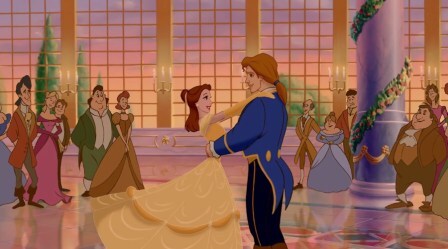
In some stories, the protagonist will never physically leave the story’s initial setting. As discussed in the first post in this series, in this case the changes between worlds is entirely symbolic, with the emphasis being not on a change in setting, but on how the setting changes around the characters. In stories like this, the New Normal World in the Resolution will still follow one of the above patterns, but again the change will be symbolic more than anything, as in Father of the Bride, in which George Banks never leaves his beloved suburban home, but witnesses it change forever when his daughter leaves to get married.
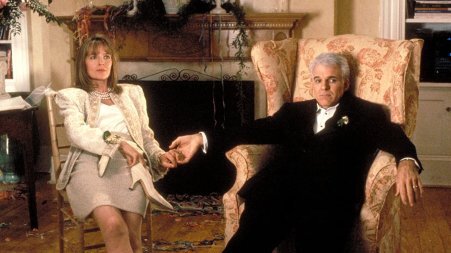
This is also very often the case in sequels, in which the character may now be ensconced in a single main physical Adventure World throughout the series. Even still, the structural necessities of each individual story shifting through its acts will create the same symbolism of Normal World, Adventure World, Underworld, and New Normal World. We can see this in series, such as the Marvel Cinematic Universe, in which most of the characters remain in their familiar settings throughout, but in which key transitions take place in each installment. For example, Tony Stark never again experiences an Adventure World so obvious as that of his imprisonment in Afghanistan in the first Iron Man movie, but each of his stories still initiates some sort of Adventure World whenever it initiates a new plot conflict.


Writing Your Story’s Theme (Amazon affiliate link)
By this point in the story, the central thematic conflict between the posited Lie and Truth will have concluded. After the travails of the Third Act’s Underworld and the definitive conclusion of the plot conflict in the Climactic Moment, the protagonist will have evolved her perspective, made her thematic choice, and implemented that choice irrevocably in her conflict with the antagonistic force. It’s all over but the shouting, as they say.
But in this case, the shouting is still thematically important. By dramatizing the New Normal World of the Resolution, you will give yourself one final opportunity to create context for the thematic journey through which readers have just followed your characters. Although the Resolution will also likely be used to tie off loose ends and indicate where the characters may go from here (whether in a sequel or not), its primary value is in demonstrating what the protagonist has gained or lost via her thematic decisions and her ability (or inability) to transform according to necessity.
For example, Casablanca is rightfully famous for its closing scenes, because it so brilliantly follows up its protagonist’s climactic choice with his departure from the story world into a new adventure.
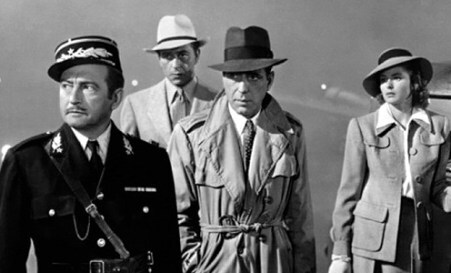
It’s true that some stories may choose to nearly or completely forego the Resolution, ending abruptly after the Climactic Moment, as in Children of Men, which ends immediately after the conclusion of the plot goal and offers no context for the character’s struggles beyond implication and subtext.

Most of the time this will only be an appropriate choice in more “literary” stories, or those that are intentionally symbolic and able to ask readers to do the extra work of creating their own subtext. Most genre stories will do better to include at least a scene of reaction from characters following the Climactic Moment, although this, too, should not be overdone. The key is to find the balance that allows you to contrast the old Normal World with the New Normal World—without dragging things out now that the story is officially over.
***
Together, the Normal World, the Adventure World, the Underworld, and the New Normal World create a simple roadmap for dramatizing the landscape of psychological transformation in any story. Whether your story digs deep with a character arc or chooses to keep the focus on the external action (or both), viewing the three acts of your story through these symbolic landscapes can help you elicit all its hidden layers of theme, symbolism, and impact.
Wordplayers, tell me your opinions! What happens in your story’s New Normal World? Tell me in the comments!Click the “Play” button to Listen to Audio Version (or subscribe to the Helping Writers Become Authors podcast in Apple Podcast or Amazon Music).
___
Love Helping Writers Become Authors? You can now become a patron. (Huge thanks to those of you who are already part of my Patreon family!)The post Understanding the New Normal World of a Story’s Resolution appeared first on Helping Writers Become Authors.





